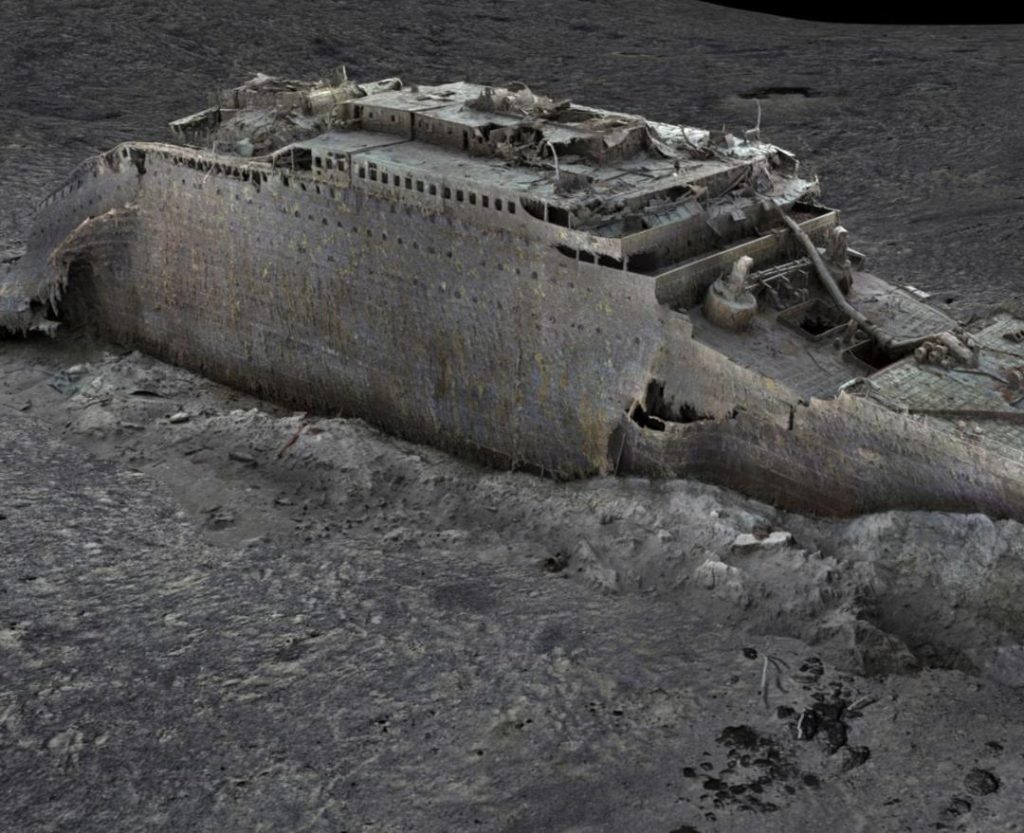
Titanic’s 3D Scan Reveals Details of Ship’s Final Hours
The RMS Titanic, one of the most infamous shipwrecks in history, has long been a subject of fascination and curiosity. Since its tragic sinking on April 15, 1912, the Titanic has been the subject of numerous investigations, documentaries, and even Hollywood films. However, a recent 3D scan of the wreck has shed new light on the ship’s final hours, providing a more detailed understanding of the events that led to its demise.
The 3D scan, created using underwater robots that descended 3,800 meters to the Atlantic Ocean floor, has generated a “digital twin” of the wreck. This digital model is a highly detailed and accurate representation of the Titanic’s structure, allowing researchers to explore the ship’s interior and exterior with unprecedented precision.
One of the most significant discoveries made through the 3D scan is the confirmation of reports that engineers worked until the very end to keep the ship’s lights on. The scan revealed that the engineers, who were aware of the impending disaster, had set up makeshift power systems to keep the lights and other essential systems functioning. This is a testament to their bravery and dedication to saving as many lives as possible.
The 3D scan also revealed new details about the ship’s watertight compartments, which were designed to keep the vessel afloat in the event of a breach. However, the scan found that the compartments were not as effective as previously thought, and that the ship’s sinking was likely accelerated by the rapid flooding of the compartments.
Another significant discovery made through the 3D scan is the location of the ship’s grand staircase, which is one of the most iconic features of the Titanic. The staircase, which was a major focal point of the ship’s design, is now missing its intricate carvings and ornate details. The scan also revealed the location of the ship’s promenade deck, where passengers would often stroll and take in the fresh air.
The 3D scan also provided new insights into the ship’s propulsion system, which was powered by massive reciprocating steam engines. The scan revealed that the engines were still operational even as the ship was sinking, and that the engineers were working to keep them running until the very end.
The 3D scan was created using a combination of advanced technologies, including underwater robots, 3D scanning software, and artificial intelligence. The process involved sending underwater robots to the Titanic wreck site, where they captured over 700,000 images of the ship’s structure. These images were then used to generate a highly detailed 3D model of the wreck.
The 3D scan is a significant breakthrough in the study of the Titanic, and it has provided new insights into the ship’s final hours. The scan has also raised new questions about the events leading up to the ship’s sinking, and it has sparked fresh debate about the role of human error and design flaws in the tragedy.
In conclusion, the 3D scan of the Titanic has provided a new and detailed understanding of the ship’s final hours. The scan has confirmed reports that engineers worked until the end to keep the lights on, and it has revealed new details about the ship’s watertight compartments, propulsion system, and other features. The scan is a testament to the power of technology and the importance of preserving history.





